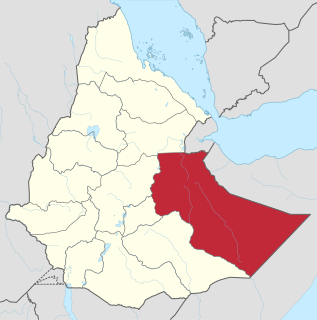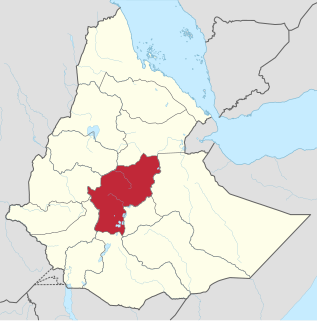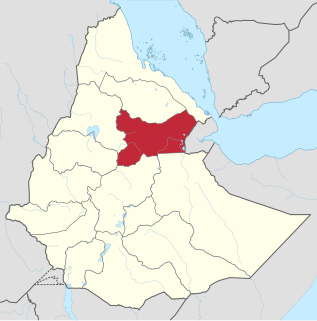 W
WEthiopia was divided into provinces, further subdivided into awrajjas or districts, until they were replaced by regions (kililoch) and chartered cities in 1992.
 W
WArsi was a province of Imperial Ethiopia Government with its capital at Asella. Historically a part of the Emirate of Harar until its invasion by Menelik and subsequent incorporation into modern Ethiopia. The province was reduced to a Zone of the Oromia Region with the adoption of the new constitution in 1995. In more ancient times, the region is seemingly related to the Harla.
 W
WBale is the name of two former polities located in the southeastern part of modern Ethiopia.
 W
WBegemder was a province in the northwestern part of Ethiopia.
 W
WGamu-Gofa was a province in the southern part of Ethiopia, named after two of the ethnic groups living within its boundaries, the Gamo and the Gofa. First incorporated into Ethiopia by Emperor Menelik II in the 1880s, its capital was first at Chencha, then around 1965 the capital was moved to Arba Minch. This province was bordered on the west and north by Kaffa, on the north and east by Sidamo, on the southeast by Lake Chew Bahir, and on the south by Kenya and Lake Turkana.
 W
WGojjam is in the northwestern part of Ethiopia with its capital city at Debre Marqos. Lake Tana is the source of the Blue Nile and is the largest lake in Ethiopia.
 W
WHararghe was a province of eastern Ethiopia with its capital in Harar.
 W
WIllubabor was a province in the south-western part of Ethiopia, along the border with Sudan. The name Illubabor is said to come from two Oromo words, "Illu" and "Abba Bor(a)". "Illu" is a name of a clan, and "Abba Bor" was the horse name of Chali Shone, who founded the ruling family of the area when it was conquered by Shewa; hence IlluAbabor means the Illu belonging to Ababor(a).
 W
WKaffa (Kefa) was a province on the southwestern side of Ethiopia; its capital city was [[bonga]. It was named after the former Kingdom of Kaffa. The etymology of Kaffa is thought to be from the Arabic qahwah meaning "a drink from berries". The English word coffee is derived from the same root.
 W
WLasta is a historic district in north-central Ethiopia. It is the district in which Lalibela is situated, the former capital of Ethiopia during the Zagwe dynasty and home to 11 medieval rock-hewn churches. Its original name in the Middle Ages was Begwena.
 W
WShewa, formerly romanized as Shua, Shoa, Showa, Shuwa, is a historical region of Ethiopia, formerly an autonomous kingdom within the Ethiopian Empire. The modern Ethiopian capital Addis Ababa is located at its center.
 W
WSidamo was a province in the southern part of Ethiopia, with its capital city at Irgalem, and after 1978 at Awasa. It was named after an ethnic group native to Ethiopia, called the Sidama, who are located in the south-central part of the country. Their major political state was the ancient Kingdom of Sidama.
 W
WTigray Province is a historical province of northern Ethiopia, notably in present day of Tigray Region. It encompasses most of the territories of Tigrinya-speakers in Ethiopia; Tigray is separated from the northern Tigrinya territories by the River Mereb, now serving as the state border to Eritrea.
 W
WWelega was a province in the western part of Ethiopia, with its capital city at Nekemte. It was named for the Wollega Oromo, who are the majority of the population within its boundaries.
 W
WWollo is a historical region and province in the northeastern part of Ethiopia, with its capital city at Dessie. The name "Wello" represents the Wello Oromo clan.